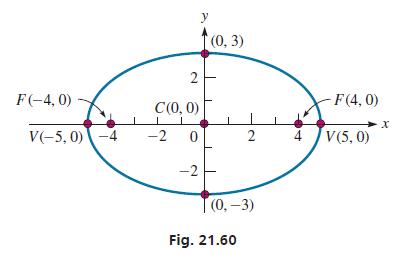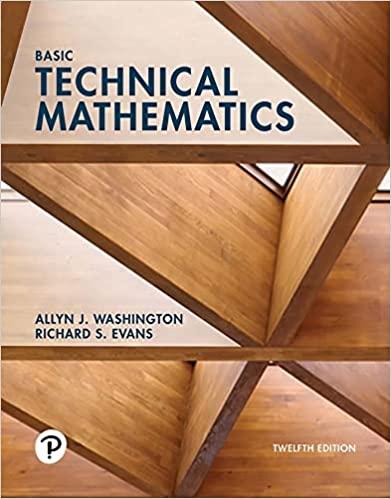In Example 1, change the 9 to 36; find the vertices, ends of the minor axis, and
Question:
In Example 1, change the 9 to 36; find the vertices, ends of the minor axis, and foci; and sketch the ellipse.
Data from Example 1
The ellipse

seems to fit the form of either Eq. (21.17) or Eq. (21.19).
Because a2 = b2 + c2, we know that a is always larger than b.
Because the square of the larger number appears under x 2, we know the equation is in the form of Eq. (21.17). Therefore, a2 = 25 and b2 = 9, or a = 5 and b = 3. This means that the vertices are (5, 0) and (−5, 0), and the minor axis extends from (0,−3) to (0, 3). See Fig. 21.60.
We find c from the relation c2 = a2 − b2. This means that c2 = 16 and the foci are (4, 0) and (−4, 0).

Fantastic news! We've Found the answer you've been seeking!
Step by Step Answer:
Related Book For 

Basic Technical Mathematics
ISBN: 9780137529896
12th Edition
Authors: Allyn J. Washington, Richard Evans
Question Posted:





